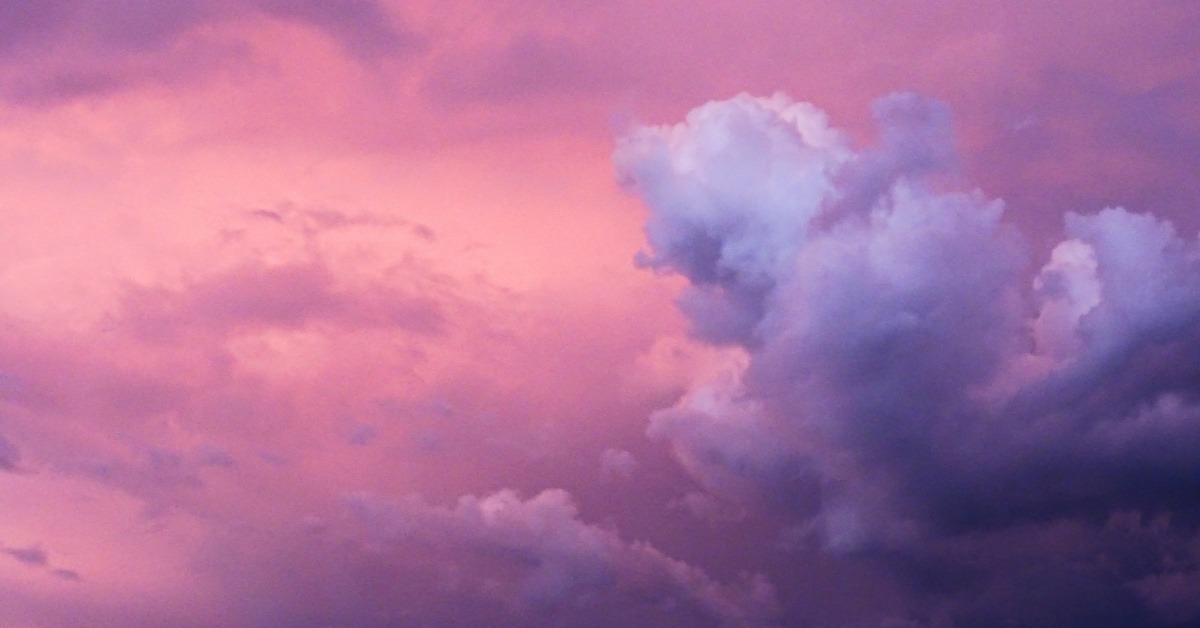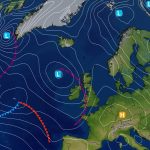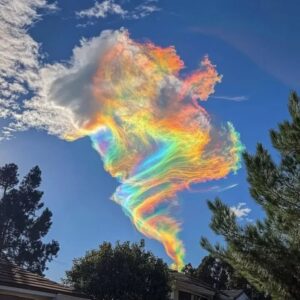Being a member of many social media groups on odd and strange weather, lots of post came up about Purple skies, so I thought We’d do a deep dive into this phenomena.
Have you ever glanced at the horizon and noticed the sky glowing in hues of violet and lavender? Purple skies are a rare and magical phenomenon, turning an ordinary sunset or sunrise into an unforgettable masterpiece. But what causes this celestial wonder? Let’s explore the science, beauty, and mystique behind purple skies in a way that’s both fun and educational.
Why Does the Sky Turn Purple?
The sky’s color is dictated by the interplay of sunlight and Earth’s atmosphere. Here’s the breakdown:
1. Rayleigh Scattering
During sunrise and sunset, sunlight travels through more of the Earth’s atmosphere. This scattering process, known as Rayleigh scattering, affects shorter wavelengths like blue and violet more than longer wavelengths like red and orange. Although violet scatters the most, our eyes are less sensitive to violet light, and it’s often mixed with red hues, creating shades of purple.
Want to dive deeper? Check out this scientific explanation of Rayleigh scattering.
2. Atmospheric Conditions
Certain weather phenomena can amplify the effect of purple skies:
- Post-Storm Serenity: Thunderstorms or heavy rain cleanse the air of larger particles, leaving only fine water droplets or clear skies. This clarity enhances the scattering effect.
- Volcanic Eruptions: Ash and aerosols in the atmosphere can scatter sunlight differently, often creating vivid purple hues. For example, the eruption of Krakatoa in 1883 famously caused stunning purple sunsets worldwide.
3. High-Altitude Clouds
Thin, high-altitude clouds like cirrus clouds can reflect sunlight, mixing warm reds with cooler blues to produce stunning purples. These clouds act like nature’s palette, amplifying the effect.
4. Pollution and Dust
Ironically, air pollution or dust in urban areas can also create purple skies. While smog is generally undesirable, the scattering of light by these fine particles can result in beautiful, albeit short-lived, vistas.
When and Where to See Purple Skies
Best Times
- Sunrise and Sunset: These are the golden hours for catching a purple sky. The sun’s angle allows for maximum light scattering.
- After a Storm: Look out for a clear post-storm evening—you might be rewarded with a violet spectacle.
Best Locations
- Coastal areas, where humidity enhances light scattering.
- Mountainous regions with clean, crisp air.
- Cities after rain, when pollution is temporarily reduced.
Fun Facts About Purple Skies
- Purple Skies on Other Planets: Mars, known for its red sky, can have purplish hues during its sunsets due to its thin atmosphere and dust particles.
- Purple Skies in Art: Artists like J.M.W. Turner captured the drama of purple skies, often inspired by volcanic eruptions.
- Purple Rain, Purple Sky: While Prince’s iconic song isn’t directly about skies, it’s hard not to associate the two with beauty and mystery.
How to Photograph Purple Skies
Capturing a purple sky isn’t just for professional photographers. Here are some quick tips:
- Use a Tripod: This ensures stability during low-light conditions.
- Adjust Your White Balance: Opt for a cooler setting to emphasize purple hues.
- Timing is Everything: Arrive early and stay late to catch the full range of colors.
- Editing Tools: Use apps like Lightroom or Snapseed to enhance the natural purples without overdoing it.
Final Thoughts
Purple skies remind us of the beauty and complexity of our world. Whether it’s the science of light scattering or the sheer aesthetic pleasure of a lavender-hued horizon, there’s so much to marvel at. Next time you see a purple sky, pause, take it in, and maybe snap a photo to share with others. After all, moments like these deserve to be celebrated.
Have you ever witnessed a purple sky? Share your experiences in the comments below!
Tell us how can we improve this post?
Hi I am Marcus, MM0ZIF, a licenced Radio Amateur, Doctor of Musicology, amateur weather enthusiast. I over the years have been a Amateur Radio Tutor, Examiner, and a Regional Manager for the Radio Society of Great Britain.
This site is dedicated more towards Amateur Radio and Weather, with an angle on Technology too. I also maintain https://havenswell.com/ which is my other blog which is more aimed at cooking, hobbies and life in general as well as businness and networking.









